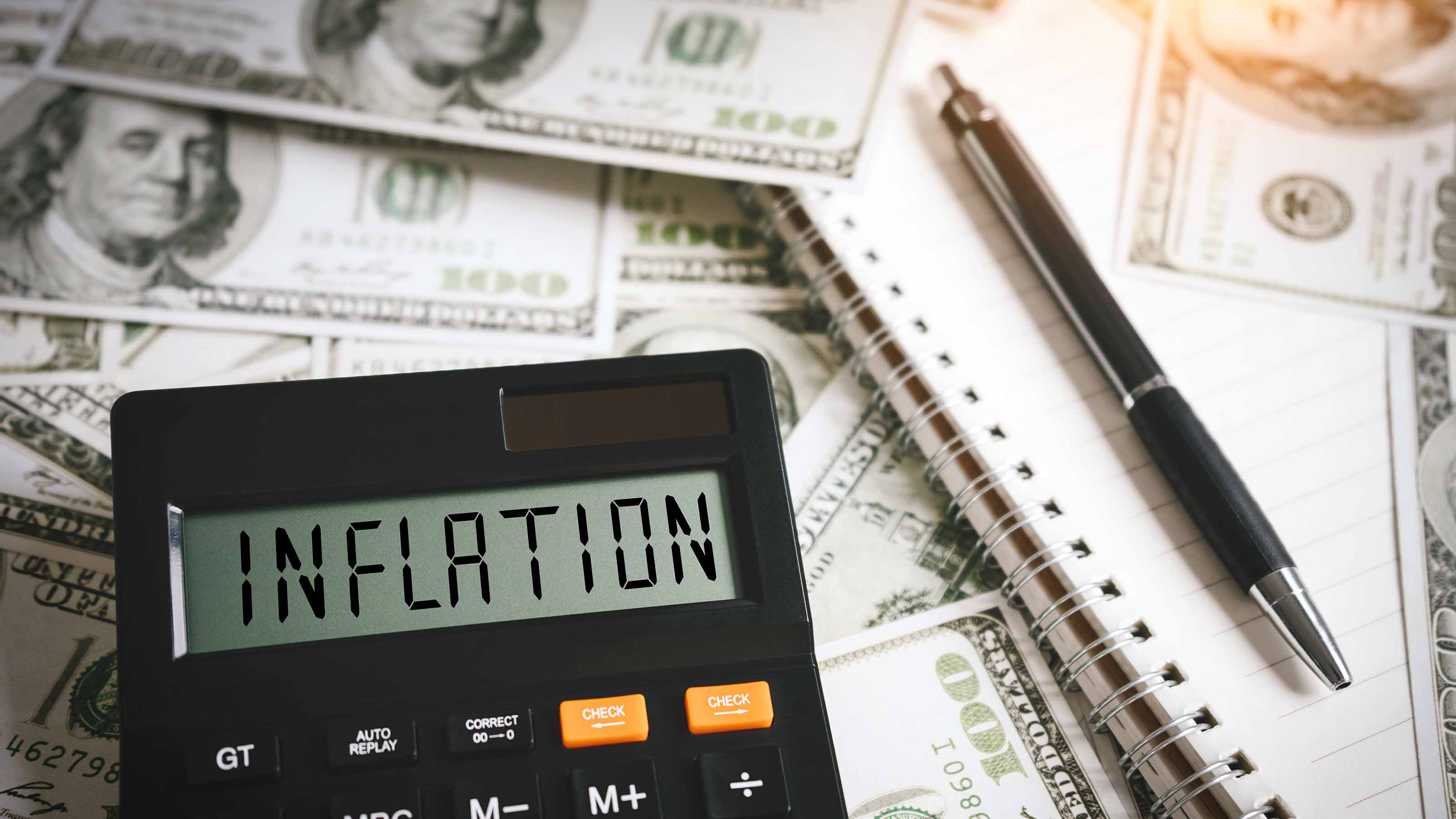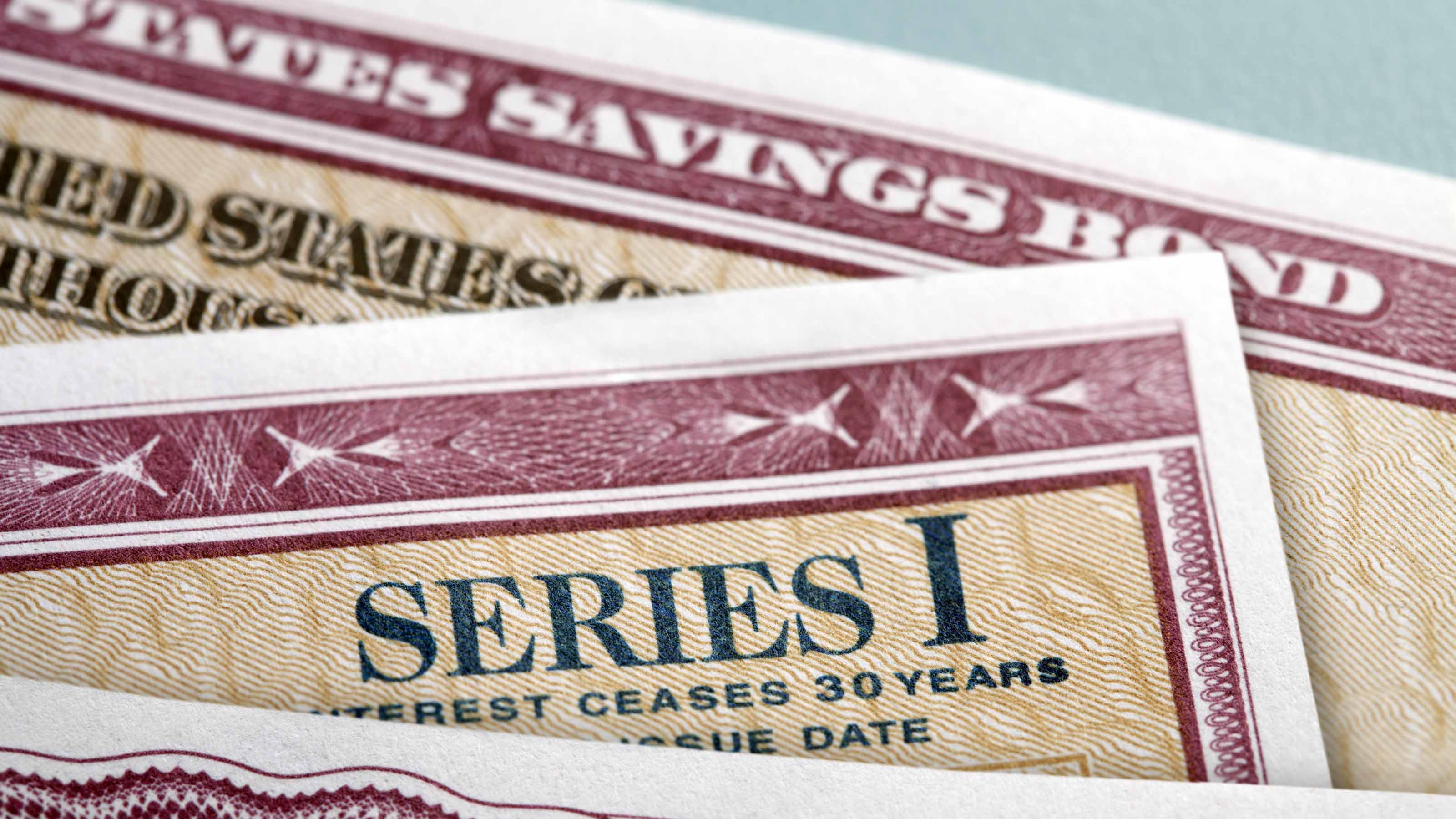The 9 Best Inflation-Proof Investments for Your Portfolio
These stocks and ETFs are some of the best inflation-proof investments and could continue to shine as price growth cools.


It's a tale as old as time – or at least, as old as the stock market: When consumer prices are on the rapid rise, investors start scrambling to snatch up the best inflation-proof investments.
It's a sound strategy … even if investors' fear of inflation is a touch overblown.
The theory goes that high inflation causes economic uncertainty and stock volatility, which typically don't bode well for equities. But the data suggests otherwise. Ben Carlson, of Ritholtz Wealth Management, showed stocks' performance between 1928 and 2020 alongside inflation data in his Wealth of Common Sense blog. The U.S. experienced 17 periods of 5.7% or higher inflation during that time. The verdict?
"The average returns for the S&P 500 in these years were 9.4%," Carlson says. "That's basically the long-term average over the past 90+ years."
So perhaps investors shouldn't fear high inflation generally. But they should still be tactical – certain parts of the stock market (and other investments, for that matter) tend to fare better than others during periods of rising consumer prices.
Today, we're going to examine nine "inflation-proof" investments – a collection of stocks, exchange-traded funds (ETFs) and other assets that can help fortify your portfolio from inflation's potential drag on the broader stock market.
But keep this in mind: Many investments designed to beat back inflation can take it on the chin when consumer prices decelerate. Thus, many of these stocks and funds might not be ideal buy-and-hold-forever investments. If you're nimble and like to take a more active tack, however, they can be useful tools to stash in your investing toolbelt.
Disclaimer
Data is as of April 11.

United States 12 Month Oil Fund LP
- Category: Energy futures
- Assets under management: $84.4 million
- Dividend yield: N/A
- Expenses: 0.90%
Let's start with black gold, Texas tea … oil, that is.
A Wells Fargo study of inflationary periods since 2000 found that oil prices rocketed higher by more than 40% – four times better than the S&P 500, and topping the other 14 asset classes Wells looked at.
Of course, unless you plan on buying a barrel of oil and dragging it back to your garage, you'll want to invest in the commodity via stocks and funds.
We like the United States 12 Month Oil Fund LP (USL, $35.82) – a fund we listed among our best energy ETFs this year. The USL invests in oil futures tied to West Texas Intermediate (WTI, aka U.S. crude oil), purchasing contracts over the next 12 months of futures.
The result is a much more accurate "tracking" of spot oil prices compared to its big brother, the $1.6 billion United States Oil Fund LP (USO). USO previously only invested in "front-month" futures, which forced it to sell contracts that were about to expire and replace them with futures expiring in the next month. This tactic not only kept USO from reliably tracking spot oil prices, but resulted in disastrous results during 2020's oil plunge that forced it to change its investment structure multiple times so it could invest in longer-dated contracts.
Let's be clear: USL doesn't track spot WTI prices perfectly. But it's one of the most direct ways investors have of buying into oil and its inflation-fighting goodness.
(Note: If you want to play natural gas in a similar manner, USCF also offers the United States 12 Month Natural Gas LP (UNL), at a 0.90% expense ratio.)

Invesco Optimum Yield Diversified Commodity Strategy No K-1 ETF
- Category: Commodity futures (Broad basket)
- Assets under management: $5.6 billion
- Dividend yield: 13.6%
- Expenses: 0.59%
Oil isn't alone – many commodities also enjoy a boost during periods of accelerating consumer prices.
"Research by Vanguard points out that over the last decade, commodities rose by 7% to 9% for every 1% of unexpected inflation (the difference between projected and realized inflation) experienced by the economy," writes KT Arasu, director of economic research at CME Group.
And just like funds make it easy to invest in oil, they make it easy to invest in a broad basket of commodities.
The Invesco Optimum Yield Diversified Commodity Strategy No K-1 ETF (PDBC, $14.56) is an actively managed ETF that invests in a number of commodity-linked futures. By investing in PDBC, you're exposed to everything from gasoline, WTI and Brent crude, to gold, copper, and zinc, to sugar, wheat and soybeans.
But PDBC stands out for its ability to do so without making your taxes a nightmare. From Kiplinger contributor Jeff Reeves, who highlighted this fund for us in our look at the best commodity ETFs:
"This exchange-traded fund is benchmarked to a basket of physical commodities to provide diversified exposure to raw materials. And it does so in a way that avoids the sometimes onerous K-1 tax forms that you can sometimes get when investing in futures markets."
The K-1 is an investing tax form that partnerships issue detailing a partner's income, losses, deductions, capital gains, dividends and more in a given tax year. For many investors, it's an additional tax complication they'd rather avoid – and PDBC allows them to dodge this extra form.
That doesn't mean you can afford to fall asleep on PDBC's tax consequences. That 13%-plus yield comes in the form ordinary income – so rather than the favorable long-term capital tax rates that qualified dividends face, this income is taxed at higher ordinary tax rates. So the smart play here is to hold PDBC in a tax-advantaged account like an IRA or Roth IRA.

Diamondback Energy
- Category: Energy
- Market value: $26.7 billion
- Dividend yield: 7.8%
The best energy stocks will change from year to year, but if you want to leverage oil's strength as one of the best inflation-proof investments, the pros say Diamondback Energy (FANG, $145.17) is one of your top options.
Diamondback Energy is an independent energy exploration and production stock that deals with oil and natural gas, operating primarily in the Permian Basin in West Texas.
And it's a popular name among the analyst set.
According to S&P Global Market Intelligence, Wall Street pros currently have 25 Strong Buy and Buy ratings on FANG shares, versus just three Holds and one Sell. And their $172.21 consensus price target gives the stock implied upside of nearly 20% from current prices.
Among FANG's attractive qualities are its cost-efficient operations. "Given that the Energy Information Administration forecasts WTI to average about $78 per barrel in 2023 and about $72 per barrel in 2024, we think FANG's breakeven price of $40 per barrel will likely enable it to see healthy free cash flow generation in 2023," says CFRA analyst Jonnathan Handshoe, who rates the stock at Buy.
"Shareholder returns also continue to impress," adds Truist analyst Neal Dingmann (Buy), "with an even higher base dividend and an incremental $500mm in non-core asset sales expected."
"What's a base dividend," you ask?
While many stocks pay a set regular dividend, energy companies are increasingly adopting a "fixed-and-variable" dividend model – part of the dividend is fixed, but the rest of it hinges on some financial metric, such as free cash flow (FCF). FANG, for instance, has an 80-cents-per-share base quarterly dividend that comes out to a 2.5% yield. The rest is based on variable dividends; Diamondback has earmarked 75% of FCF for the variable dividend for the foreseeable future.

Vanguard Real Estate ETF
- Category: Real estate
- Assets under management: $32.7 billion
- Dividend yield: 4.1%
- Expenses: 0.12%
Like commodities, real estate is another alternative investment that's popular for its inflation-proof properties and positive track record during times of rising prices.
But what gives real estate its durability as one of the best inflation-proof investments?
"Real estate can offer dynamic cash flows," write BlackRock's Joe Zidle and Nadeem Meghji. "Unlike traditional bonds that generate fixed cash flows, the income streams from real estate can rise over time."
"Prioritizing assets with shorter lease durations in sectors with strong underlying growth fundamentals can provide the opportunity to regularly reset rents to prevailing market rates in an inflationary environment," they continue. "Hotels effectively have one-night leases. Other sectors, such as residential and industrial, also tend to have shorter-duration leases. Certain assets with longer duration leases, such as net lease properties, often include contractual rent escalators to mitigate inflationary risks."
But since most of us don't have the money to go buy a hotel or warehouse, real estate investment trusts (REITs) will have to suffice. As a reminder: REITs are publicly traded companies that own and often operate property. They also enjoy generous tax breaks, but in return, they're required to return at least 90% of their taxable income to shareholders – in the form of dividends.
The Vanguard Real Estate ETF (VNQ, $83.12) is one of the most widely used ways to get exposure to this sector and its oversized dividends.
VNQ holds more than 160 real estate investment trusts covering a wide variety of industries. Top holdings include the likes of industrial logistics play Prologis (PLD), telecommunications infrastructure firm American Tower (AMT) and data center real estate firm Equinix (EQIX). Currently, the ETF's 4%-plus dividend is more than twice that offered by the S&P 500.
A fair warning, though: For all its benefits, real estate isn't bulletproof. The sector has widely underperformed during the 2022-23 bear market. But if inflation rears its ugly head, it still might be worth going back to the well.

Alexandria Real Estate Equities
- Sector: Real estate
- Market value: $21.3 billion
- Dividend yield: 3.9%
Some investors might prefer to skip a broad basket of REITs in lieu of some of the sector's sturdiest corners.
"At CFRA, two of our favorite sub-industries entering 2023 are industrial REITs and healthcare REITs," CFRA analyst Michael Elliott wrote in the firm's 2023 REIT preview. "Both are experiencing strong FFO growth, neither should be classified as highly cyclical, in our view, and overall industry trends likely to play out in the next few years remain positive."
Let's focus on the latter sub-industry – healthcare REITs – in highly rated Alexandria Real Estate Equities (ARE, $123.04). Alexandria is a leading owner of life science, technology and agricultural technology real estate, boasting 432 properties across North America, leased out to roughly 1,000 tenants, many of them healthcare stocks such as Bristol Myers Squibb (BMY), Moderna (MRNA) and Eli Lilly (LLY).
ARE has had a rough run in 2023, off 15% versus single-digit gains for the S&P 500. But many pros think Alexandria is primed for a rebound.
"The stock price weakness over the past year given slower demand, reduced VC funding and new supply concerns appears to have stabilized with the operating outlook while a pullback in debt costs has likely improved valuations on the margin," says Baird analyst David Rodgers, who rates the stock at Outperform (equivalent of Buy). "These factors are reflected in our outlook, and we expect the stock to continue to react positively to fundraising that favors asset monetization over sizable equity issuance."
The stock currently enjoys nine Strong Buy or Buy ratings, versus just one Hold and no Sells. And they're uber-bullish on ARE's potential returns: a $174.30 consensus price target implies 40% upside in the next 12 months or so.

Vanguard Short-Term Inflation-Protected Securities ETF
- Category: Treasury Inflation-Protected Securities (TIPS)
- Assets under management: $15.3 billion
- SEC yield: 1.25%*
- Expenses: 0.04%
Rising inflation is typically anathema to bonds, but a couple of fixed-income investments can actually remain strong in the face of rising prices.
One such investment: Treasury Inflation-Protected Securities (TIPS).
TIPS are a special type of U.S. Treasury bond whose value is tethered to the consumer price index (CPI) and adjusted higher when consumer prices rise.
Let's say you bought $10,000 worth of inflation-adjusted bonds, and the CPI grew 1% over the next six months. The value of your bonds would rise by $100, and thus the purchasing power of your original investment would remain the same. The interest on the bonds is based on the adjusted principle, too, so the interest rate will change over time – and it's possible, depending on the inflationary environment, for yields to even turn negative.
The Vanguard Short-Term Inflation-Protected Securities ETF (VTIP, $47.85) allows you to invest in this strategy without buying individual bonds.
As the name indicates, VTIP invests in short-term TIPS – the portfolio currently holds 24 TIP issues with a current average duration of just 2.5 years. (Duration is a measure of risk. VTIP's duration of 2.5 years implies that a 1% increase in interest rates should result in a 1% decrease in the fund's price, and vice versa.)
Naturally, TIPS won't do much for you if inflation decelerates, and the short-term nature of these bonds means the fund won't take off even in the best of environments. But VTIP will protect your capital during periods of rising inflation, which is better than what most investments can offer.
* SEC yield reflects the interest earned after deducting fund expenses for the most recent 30-day period and is a standard measure for bond and preferred-stock funds.

Series I Savings Bonds
- Category: Savings bonds
- Assets under management: N/A
- Interest rate: 6.89%**
- Expenses: 0.05%
You won't find this particular pick on any public exchange, but it's still an easily accessible investment – one that combines the powers of compound interest with an inflationary adjustment, similar to TIPS.
Series I Savings Bonds, or "I bonds," are a savings bonds issued by the U.S. Treasury with a twofold interest rate. Part of the rate is fixed, but part of it changes with inflation, at a rate set by the Treasury every six months.
Currently, I bonds yield 6.89%, made up of a 0.40% fixed rate and a 6.49% inflation adjustment.
You can purchase Series I bonds at TreasuryDirect.gov. They require a minimum purchase of $25, but above that, you can spend any amount down to the penny. (Note: You can also buy Series I paper savings bonds if you purchase them with your IRS tax refund, but you can only buy them in denominations of $50, $100, $200, $500, and $1,000.)
** Interest rate good for Series I savings bonds issued between Nov. 1, 2022, and April 30, 2023.

Fidelity Stocks for Inflation ETF
- Category: Large-/mid-cap stock
- Assets under management: $189.0 million
- Dividend yield: 1.9%
- Expenses: 0.29%
The past few years have seen a handful of ETFs come to market that are designed for the specific purpose of batting away inflation.
The Fidelity Stocks for Inflation ETF (FCPI, $31.80) attempts to track the Fidelity Stocks for Inflation Factor Index, "which is designed to reflect the performance of stocks of large and mid-capitalization U.S. companies with attractive valuations, high quality profiles and positive momentum signals, emphasizing industries that tend to outperform in inflationary environments."
It might emphasize inflation-proof stocks, but it doesn't mandate them.
Healthcare, consumer staples and energy are among FCPI's heaviest-weighted sectors, but tops is technology, at nearly 20% of the fund. This is where high quality profiles come in – the sector is anchored by blue chip stocks Apple (AAPL) and Microsoft (MSFT), which have the financial wherewithal to stand strong in just about any scenario.
While this roughly 100-holding portfolio is designed to be inflation-proof, it's a diversified enough fund that it should have a shot at performing well even if consumer prices stagnate.

Horizon Kinetics Inflation Beneficiaries ETF
- Category: Global small-/mid-cap stock
- Assets under management: $1.2 billion
- Dividend yield: 1.7%
- Expenses: 0.85%
The Horizon Kinetics Inflation Beneficiaries ETF (INFL, $31.69) is another stock-focused ETF meant to battle inflation.
This one does so by investing in both U.S. and international stocks that "are expected to benefit, either directly or indirectly from rising prices of real assets (i.e., assets whose value is mainly derived from physical properties such as commodities) such as those whose revenues are expected to increase with inflation without corresponding increases in expenses."
There's no subtlety here. INFL is extremely overweighted in just three sectors – materials (28%), energy (25%) and financials (24%), which together make up more than three-quarters of the fund.
Current holdings include the likes of Canada oil and gas royalty firm PrairieSky Royalty, food processing and commodity giant Archer Daniels Midland (ADM), and miners Wheaton Precious Metals (WPM) and Franco-Nevada (FNV).
Another pair of interesting inflation-proof investments found in INFL's holdings are Intercontinental Exchange (ICE) and Australia's ASX (ASX), both of which deal in commodity-related futures exchanges.
This strategy has helped INFL largely outperform throughout this yearlong-plus bear market, with shares in the black since Jan. 6, 2022, versus double-digit losses for the S&P 500.
Learn more about INFL at the Horizon Kinetics provider site.
Get Kiplinger Today newsletter — free
Profit and prosper with the best of Kiplinger's advice on investing, taxes, retirement, personal finance and much more. Delivered daily. Enter your email in the box and click Sign Me Up.
Kyle Woodley is the Editor-in-Chief of WealthUp, a site dedicated to improving the personal finances and financial literacy of people of all ages. He also writes the weekly The Weekend Tea newsletter, which covers both news and analysis about spending, saving, investing, the economy and more.
Kyle was previously the Senior Investing Editor for Kiplinger.com, and the Managing Editor for InvestorPlace.com before that. His work has appeared in several outlets, including Yahoo! Finance, MSN Money, Barchart, The Globe & Mail and the Nasdaq. He also has appeared as a guest on Fox Business Network and Money Radio, among other shows and podcasts, and he has been quoted in several outlets, including MarketWatch, Vice and Univision. He is a proud graduate of The Ohio State University, where he earned a BA in journalism.
You can check out his thoughts on the markets (and more) at @KyleWoodley.
-
 Ten Cheapest Places To Live in Florida
Ten Cheapest Places To Live in FloridaProperty Tax Make your Florida vacation spot daily living — these counties have the lowest property tax bills in the state.
By Kate Schubel
-
 I'm 50 and my home is worth $5 million. Can I retire now?
I'm 50 and my home is worth $5 million. Can I retire now?It may be oh-so tempting to cash out your upscale home and leave work for good. But should you? We ask the experts.
By Maurie Backman
-
 The Cheapest Places To Retire in the US
The Cheapest Places To Retire in the USWhen you're trying to balance a fixed income with an enjoyable retirement, cost of living is a crucial factor to consider.
By Stacy Rapacon
-
 Can Stocks Picked by Artificial Intelligence Beat the Market? 3 Stocks to Watch
Can Stocks Picked by Artificial Intelligence Beat the Market? 3 Stocks to Watchstocks An artificial intelligence stock-picking platform identifying high-potential equities has been sharp in the past. Here are three of its top stocks to watch over the next few months.
By Dan Burrows
-
 5 Stocks to Sell or Avoid Now
5 Stocks to Sell or Avoid Nowstocks to sell In a difficult market like this, weak positions can get even weaker. Wall Street analysts believe these five stocks should be near the front of your sell list.
By Dan Burrows
-
 Best Stocks for Rising Interest Rates
Best Stocks for Rising Interest Ratesstocks The Federal Reserve has been aggressive in its rate hiking, and there's a chance it's not done yet. Here are eight of the best stocks for rising interest rates.
By Jeff Reeves
-
 The 5 Safest Vanguard Funds to Own in a Volatile Market
The 5 Safest Vanguard Funds to Own in a Volatile Marketrecession The safest Vanguard funds can help prepare investors for continued market tumult, but without high fees.
By Kyle Woodley
-
 The 5 Best Inflation-Proof Stocks
The 5 Best Inflation-Proof Stocksstocks Higher prices have been a major headache for investors, but these best inflation-proof stocks could help ease the impact.
By Louis Navellier
-
 5 of the Best Preferred Stock ETFs for High and Stable Dividends
5 of the Best Preferred Stock ETFs for High and Stable DividendsETFs The best preferred stock ETFs allow you to reduce your risk by investing in baskets of preferred stocks.
By Kyle Woodley
-
 What Happens When the Retirement Honeymoon Phase Is Over?
What Happens When the Retirement Honeymoon Phase Is Over?In the early days, all is fun and exciting, but after a while, it may seem to some like they’ve lost as much as they’ve gained. What then?
By T. Eric Reich, CIMA®, CFP®, CLU®, ChFC®
